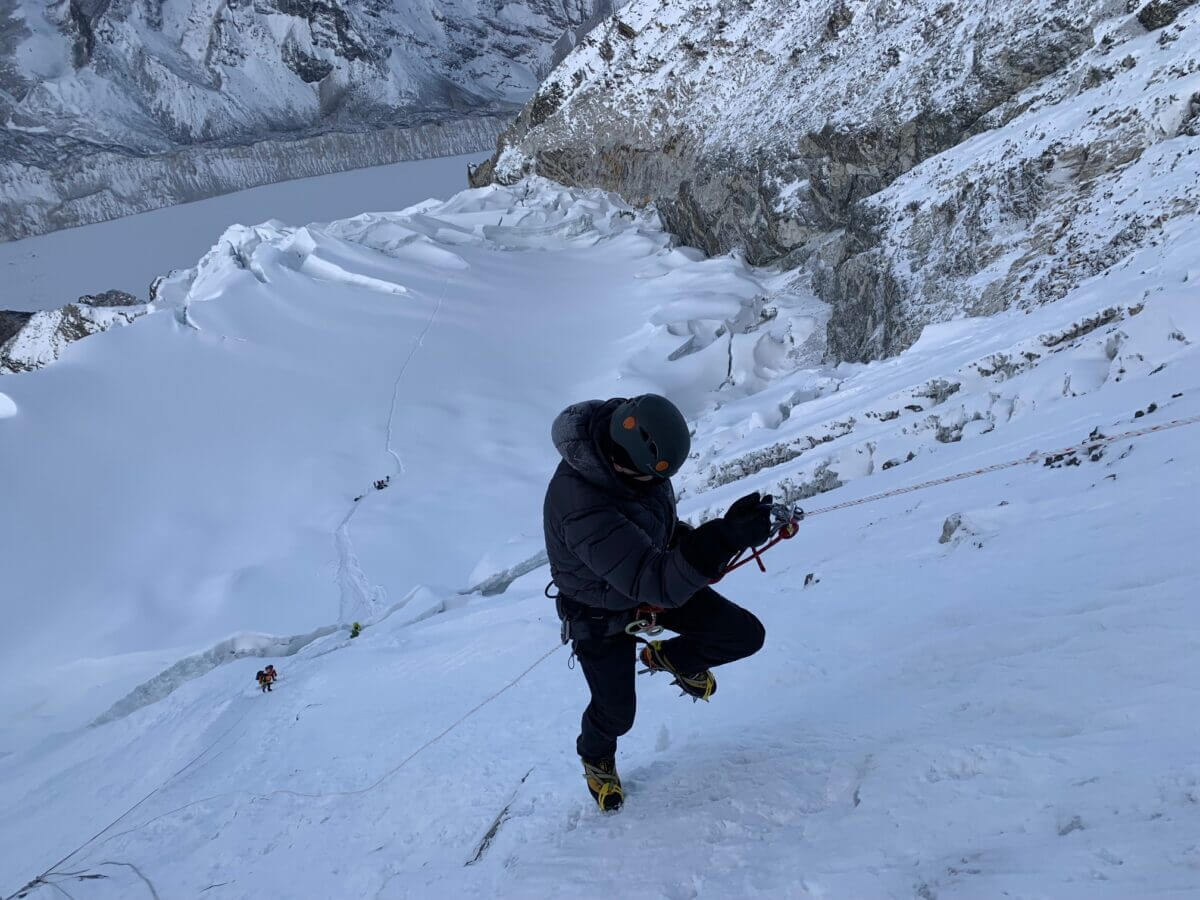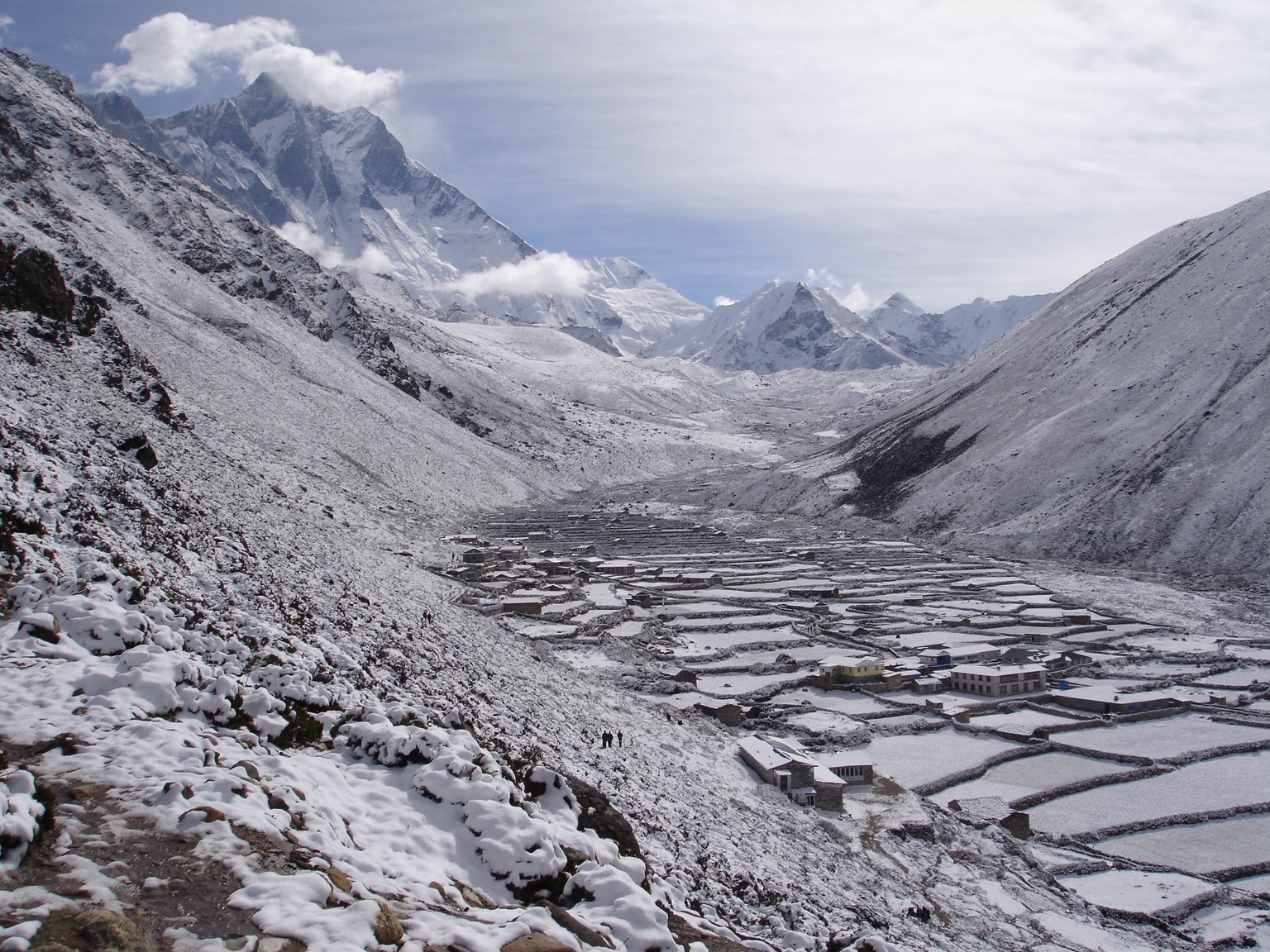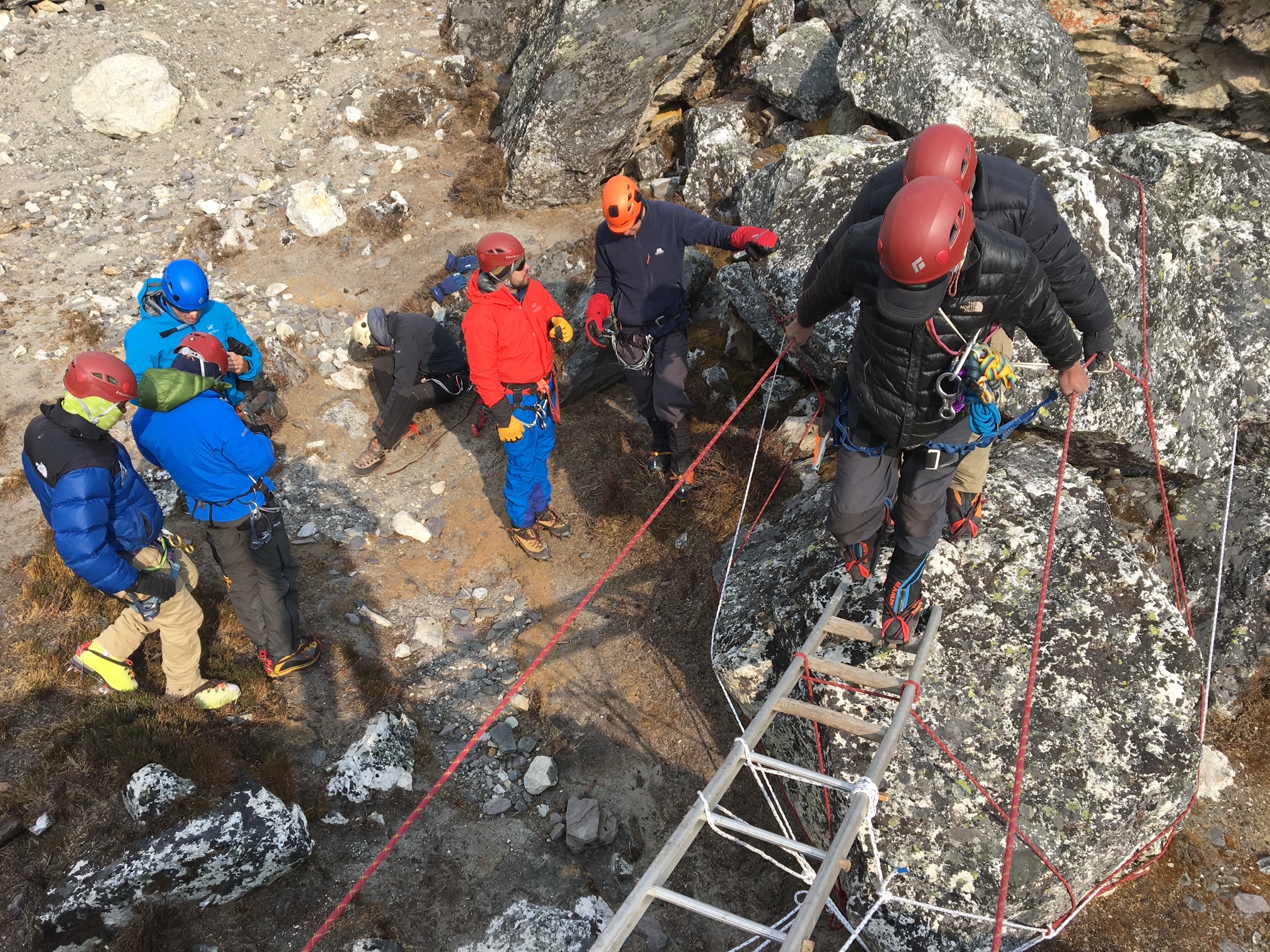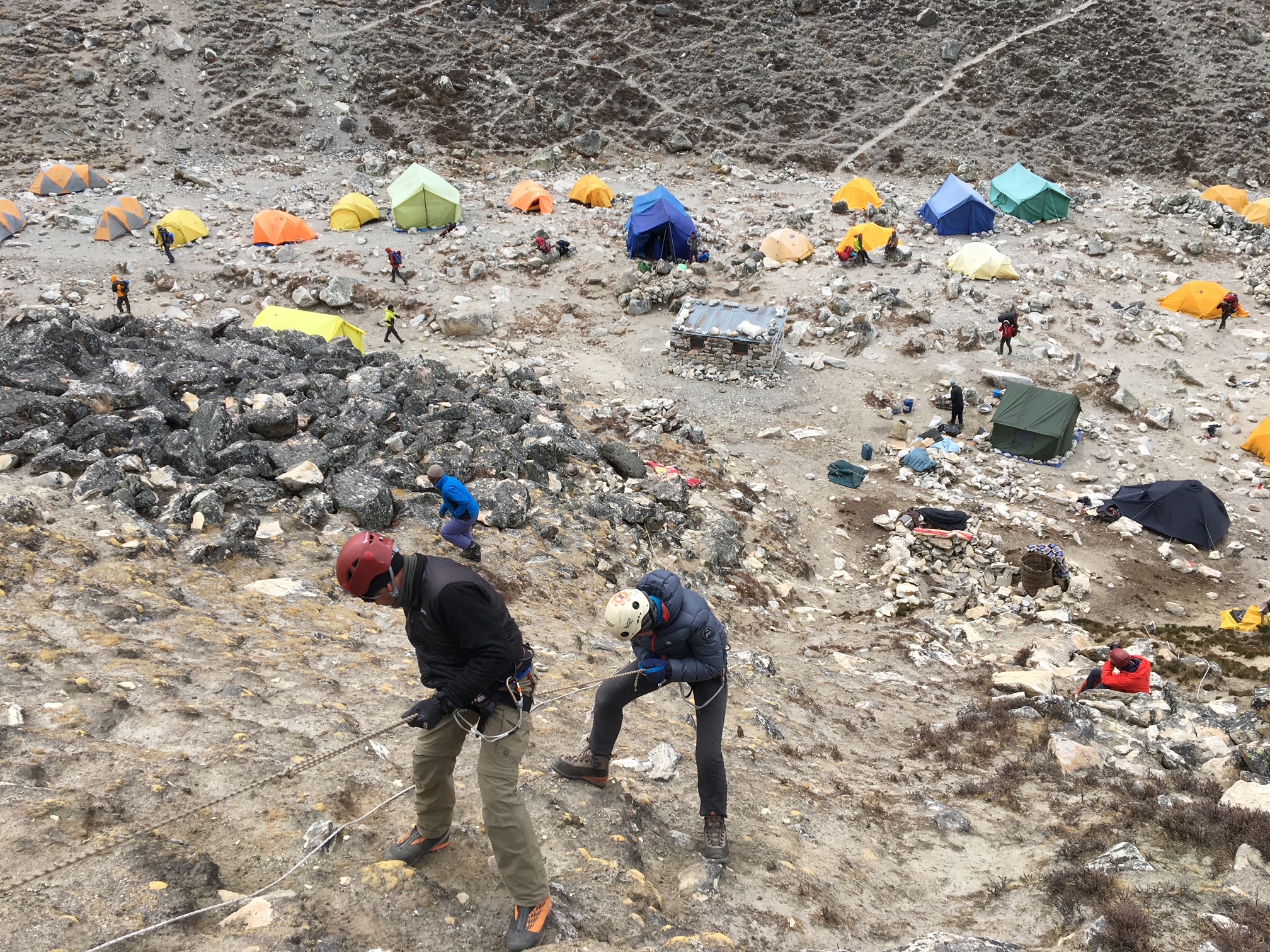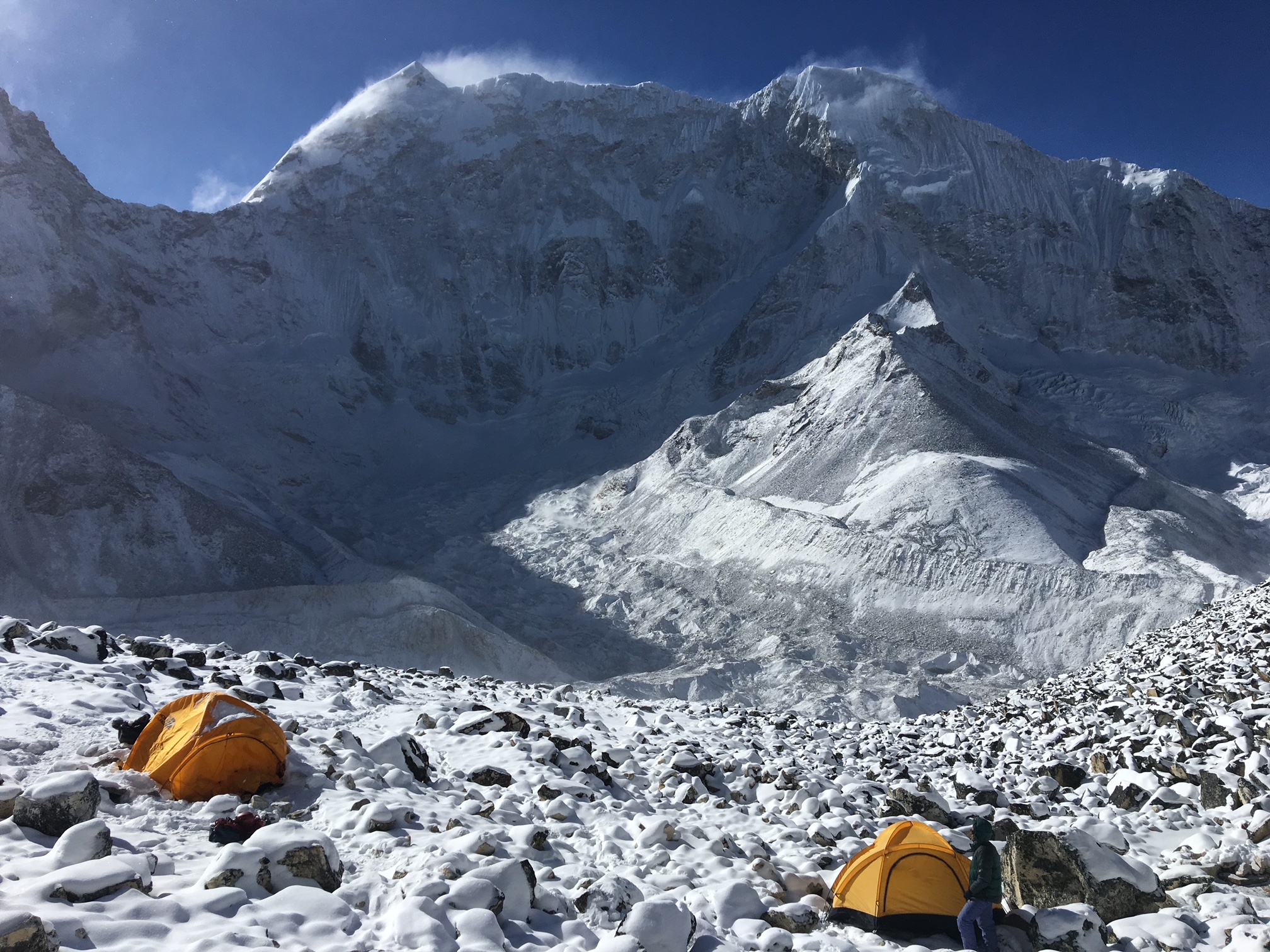Here are some frequently asked questions about training for Island Peak after 15 years on this mountain. A lot of people are underestimating Island Peak and it is time to write down some observations and set the record straight. We get asked weekly about the best way to train and prepare for high altitude. Read more about this here. Mountaineering and trekking adventures are endurance sports. In my opinion you need to be doing specific training 5 days a week along with, being as self sufficient as possible. Read some reviews from our trips.
How to Develop the Right Training Plan
Remember never follow a training plan you read on the internet. People ask me all the time is Island Peak as easy climb. If they are asking me personally, I would say it is very straight forward. I have climbed Everest, led 20+ Island Peak trips, 40+ Kilimanjaro trips and led over 150 Expeditions above 17,000 feet. You can have to access your personal ability, experience, age, technical experience, hiking experience and current weekly training. Contact us today and set up a free consultation. Read more.
There are so Many Components to be Safe and Successful
Firstly, you need to review the itinerary you are picking. Most Island peak itineraries skip acclimatization lower down the trail, then move to Chuckung, 4,700m/ 15,419 feet. Pretty much all itineraries and programs skip ladder training and move quickly into Island Peak Base Camp, use rented tents and staff.
That night at mid night you will be expected to move from 5,100m/ 16,732 feet to 6,189m/ 20,305 feet and back down in one push. There will be no spare summit attempts or use of High Camp 5,500m/ 18,044 feet. In my experience High Camp is important in any Island Peak ascent. Check out our itinerary.
Use Island Peak High Camp
Hiking and climbing from Base Camp is possible, but this should only be used by the fittest and more experienced climbers. This is not the solutions for most people. Secondly, weather can play its part and ruin your experience if you do not have additional summit attempts or the right support team for the ascent. Thirdly, have you been training for a longer and harder summit attempt?
What is there is deep snow, or steep ice on the headwall. There may be challenging conditions under foot in the gullies and scrambling sections. Finally, do you have the technical proficiency for fixed line climbing, what if you lose your figure of 8 or rappelling device, how many mountaineering knots do you know?
Let’s Answer Some Questions on Island Peak
1). Should I Train 6 days a Week
Overall, you want to be building up to training 6 days a week. This training will vary and changes as you build towards to trip. Never follow a training plan on the internet. You need to develop a specific targeted plan over months of preparation. Build endurance, strength and conditioning. Follow a base, build, peak phase training plan. Getting the body used to working day after day, and build up all of the muscle fibers and underlying support systems for your body.
2). Hiking Training
You should be hiking 1 day a week building up from 2 to 6+ hours would be ideal. Make sure you are getting 1,500 feet of elevation building up to 3,000 feet per hike over 6+ month period. You also need to build up the weight you carry over time. When I train, I build slowly and steadily. I like to hike on easier and steeper terrain. Steep terrain, even getting up on my toes get by legs working harder for the steeper sections of Island Peak.
3). Carrying Weight
Working up to carrying around 20 to 25 pounds in your backpack. You do not need to be carrying this weight in every training session. Mix it up, again build slowly up to carry this amount weight. When I am on the Stairmaster I start with 10/15lbs and get used to carrying this weight. I usually stay at this weight for 4 to 6 weeks and slowly adding more weight may 5lbs every 4 weeks.
Slowly build up the weight you carry in your backpack. If you want to you can carry water as your weight on longer hikes and unload the water for the longest descent. If you are feeling strain and too much stress on your body, back off and get in some good recovery sessions.
4). Building Strength
Strength and overall body strength are critical to surviving in low oxygen environments. When you are thinking of building a weights program make sure you have more reps with lower weight. You are trying to build strength for an endurance sport. I am a big fan of using a fit balls, working obliques, core and balance. You can also use the ball as a bench.
I have a step stool at home for stepping up with weights, one leg squats, and overall stability work to get me ready for rough terrain and awkward technical work situations at elevation? I am a big fan of cable work, either pulling or pushing. Cables give you a wide range of options for building your overall upper body strength. This is important work that needs to be done.
5). Build Endurance
Gradual transition from 2 hour hikes building up to 6 hour hikes. Building up slowly over time is important for any endurance activity. Endurance exercise is one of the four types of exercise along with strength, balance and flexibility. When you think about endurance training you are trying to gradually increase your stamina, strength and length of time at a specific heart rate. The term endurance training generally refers to training the aerobic system as opposed to the anaerobic system.
For trekking and mountaineering, endurance is developing the hours hiking up and down hill. Ideally the goal should be spending more time doing the achieve than trying to get from point A to point B as quickly as possible. Endurance for Trekking and Mountaineering is closely tied to the execution of skill and technique. For example if you are trekking in a region with lots of stairs then you should be training on more stairs.
On Island Peak there is a lot of steep terrain and big step ups so you need to find steep hills to train on. Island peak pushes your legs hard on the final section to the summit. So how do you think you should be training? A well conditioned athlete can be defined as, the athlete who executes his or her technique consistently and effectively with the least effort. Keys for measuring endurance are heart rate and pace in hiking.
6). Stability & Flexibility Training
When you make the transition from trekking to mountaineering you will be using bigger more rigid mountaineering boots. This means your balance and stability will be tested. Walking on steep rock, snow and ice in rigid boots needs to be factored into your training. You will need to focus on Abs, lower back, glutes, hip flexors, obliques, arms and quads. Also consider Yoga as part of your strength and flexibility training.
7). Heart Rate Zones
Important to work at sufficient heart rate zones to build the base and endurance to work efficiently later at high altitude, for example spending most of your training time at 80% heart rate zone? Learn more. It is important to be exercising and stress testing your body in a similar fashion that you will be doing on the trip.
7). Interval Training
More interval training and explosive work as we get close to trip time? This should be added in the last 6 to 8 weeks before the actual trip.
8). Give the Body Some Rest
Should I take one week off every 2 months to let the body recover, build, and get ready for next phase? This is important and necessary to let the body recovery and you will be able to come back stronger.
9). Ladder Training
Should I train on a ladder with mountaineering boots and crampons before the trip? Yes, you do not want your first time to be at 19,000 feet on a glacier crossing a crevasse.
10). Technical Training
There is some specific technical training that is needed to be safe on Island peak. We can help you get this training.
Be Informed and be Prepared
Weather, fixed line climbing experience, acclimatization, high camp, training, summit attempts. Have you thought about all aspects of the trip. Depending on the month you are climbing the gear and clothing may vary. Start thinking about all the different elements of the trip so you can come prepared to be safe and successful
Talk to the Experts
We are experts in field Climb Island Peak, running trips to the highest level. Our goal is for each person to have the best and safest experience possible. We have the same guides on all our trips importantly, we do not outsource guides. Island Peak should demand more respect that is why only offer high quality professionally led trip. We do not cut corners on any of our trips. We can help you come fully prepared. Get in touch today.

